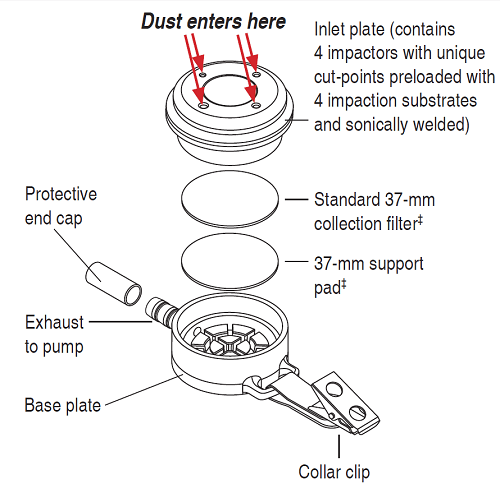What Happens if You Take Too Much Silica
To answer this question, we first need to review how it affects us. Respirable crystalline silica dust particles are tiny, about 100 times smaller than the grains of sand found on the beach. These dust particles are still very sharp, and when inhaled they damage the lungs. As these particles damage the lungs, scar tissue forms and limits oxygen absorption. Even after exposure to silica dust ceases, the particles remain in the lungs and continue causing damage. This condition is called silicosis, and there is no cure.
Chronic silicosis typically occurs after 15-20 years of occupational exposure to respirable silica. In extreme exposure, acute silicosis can develop within months of exposure to high concentrations of silica. Symptoms of silicosis include shortness of breath, severe cough, weight loss, chest pain, bluish coloration, and in some cases fever. Remember that silicosis is exposed by repeated occupational exposure, and that brief exposures are unlikely to cause significant health issues. It is also cumulative.
Below you can find the exposure levels and hours exposed chart to really get a feel for how much silica dust is harmful for a certain amount of time.
Because silicosis is caused by cumulative or repeated exposure to respirable crystalline silica, it makes sense that we would want to limit exposure as much as possible! OSHA has set the Personal Exposure Limit (PEL) at 50 micrograms per cubic meter of air, averaged over an 8 hour shift. This is also known as the 8 hour time weighted average (TWA).
How To Measure Exposure to Silica Dust

Photo Credits: SKC
There are various air sampling methods. We use Parallel Particle Impactor (PPI) cartridges (as seen on the left) connected to a calibrated sampling pump that collects air from the breathing zone of the operator. Unlike the Dirr-Oliver cyclones, the PPI cartridges are not affected by position and are less likely to have skewed results. These cartridges are then sent to a laboratory for analysis.
What if a sampling report would show exposure to more than 50 mg/cu meter of air? When working at a task that will result in excessive exposure, a worker must wear appropriate personal protective equipment (PPE). A respirator must be chosen that is capable of reducing the exposure to less than the 50 mg/cu meter PEL. This may be a half mask or full face respirator.
How to Prevent Silica Dust Entering Your Body
It's always best to choose an engineering control (water or vacuum) that is capable of reducing exposure below the PEL! Frequent respirator use does have some health risks, and OSHA regulates their use. If a worker must wear a respirator 30 or more days per year, the employer must also meet the Medical Surveillance portion of OSHA's silica standard.
You can also shop our selection of Dust Killer Tools to find the right machine for you. We also have attachable equipment including the Dust Tiger, Dust Xtractor, and the Dust Shark that will connect to your very own machines to take care of the dust while you are cutting.
All in all, Silica Dust in NOT a joke. Make sure to take every precaution you can while working with silica dust and make sure you are in OSHA's guidelines while doing so.
If you need help getting your team the silica dust solution they deserve while at the same time being protected from OSHA's silica dust laws, request pricing on our products below. Need more questions answered? Contact us at (717) 983-3878 or by email at jeremy@dustkiller.tools.
What Happens if You Take Too Much Silica
Source: https://www.dustkiller.tools/how-much-silica-dust-is-harmful/
0 Response to "What Happens if You Take Too Much Silica"
Post a Comment